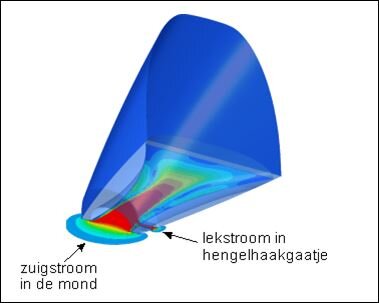Holes in fishes’ jaws caused by fishing hooks reduces their suction power, making it more difficult for them to ingest food. This is the outcome of a new international study in which researcher Sam Van Wassenbergh (UAntwerp) participated.
Sam Van Wassenbergh (UAntwerp) investigated impact of holes caused by fishing hooks.
Most recreational anglers are required to use the ‘catch and release’ principle in order to maintain fish populations. However, fish that are put back in the water often have injuries to their mouths caused by fishing hooks. These hooks pierce the skin at the edge of the mouth and the fish is left with a hole in its jaw.
“This hole inevitably reduces the fish's suction power. Fish need this suction power to catch food,” says biologist Sam Van Wassenbergh from the Functional Morphology laboratory at the University of Antwerp. He worked with colleagues from Canada and the United States on a study that has just been published in The Journal of Experimental Biology.

Hydrodynamic model of a suction-feeding fish with leaking inflow caused by the hole from the fishing hook (credits: Dr Sam Van Wassenbergh). The heatmaps indicate the water flow rate.
“The larger this hole is in relation to the size of the mouth opening, the more severe the decrease in suction power. Especially for small fish, a fishing hook is often relatively thick. Those are exactly the types of fish that are often thrown back, and they experience a decrease in suction power of more than 10%. This may not seem like much, but for a fish it can mean the difference between catching its prey or just missing it.”
The predictions of Van Wassenbergh's hydrodynamic models were confirmed by high-speed video footage of Canadian shiner perch which had recently been caught on a hook and line: the maximum speed at which these fish succeeded in sucking in their prey was significantly lower. However, more research is still needed according to Van Wassenbergh: “We don’t yet know how long it takes for the hole to close up or how all this affects the survival of the fish.”
Hydrodynamic model
